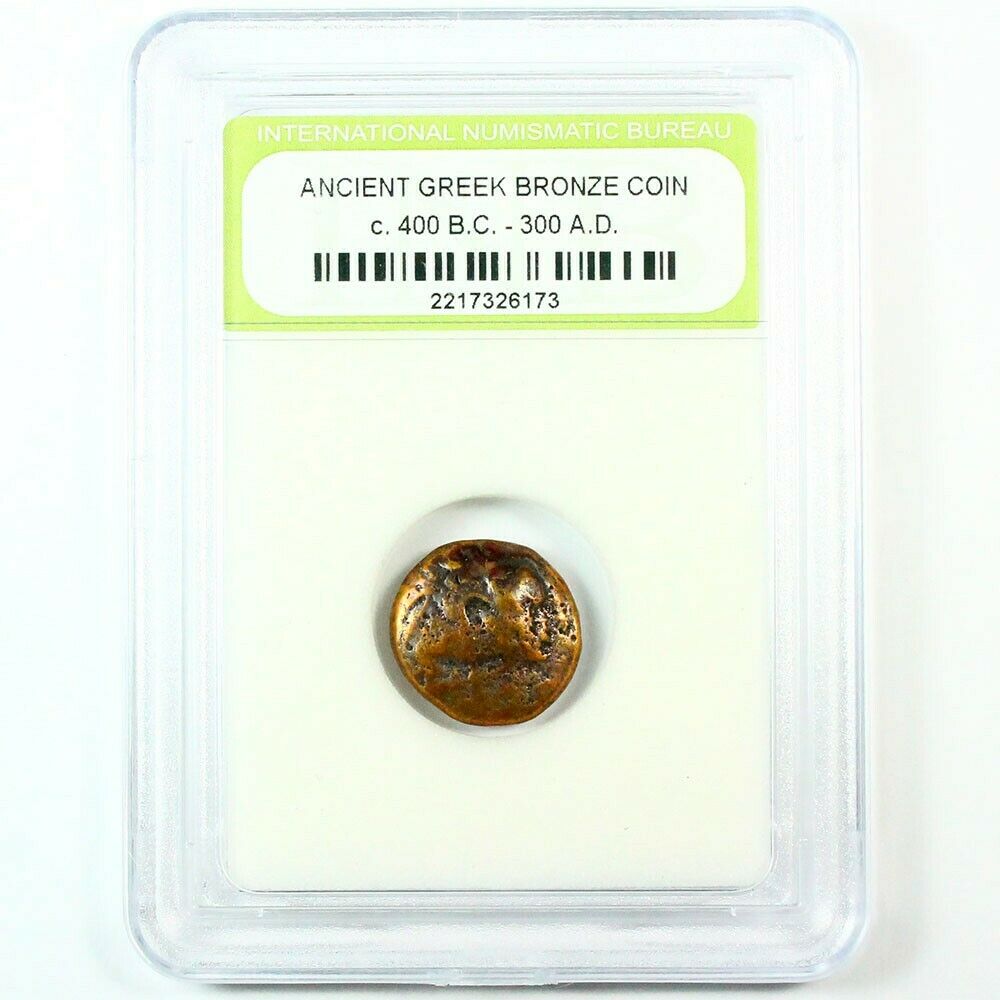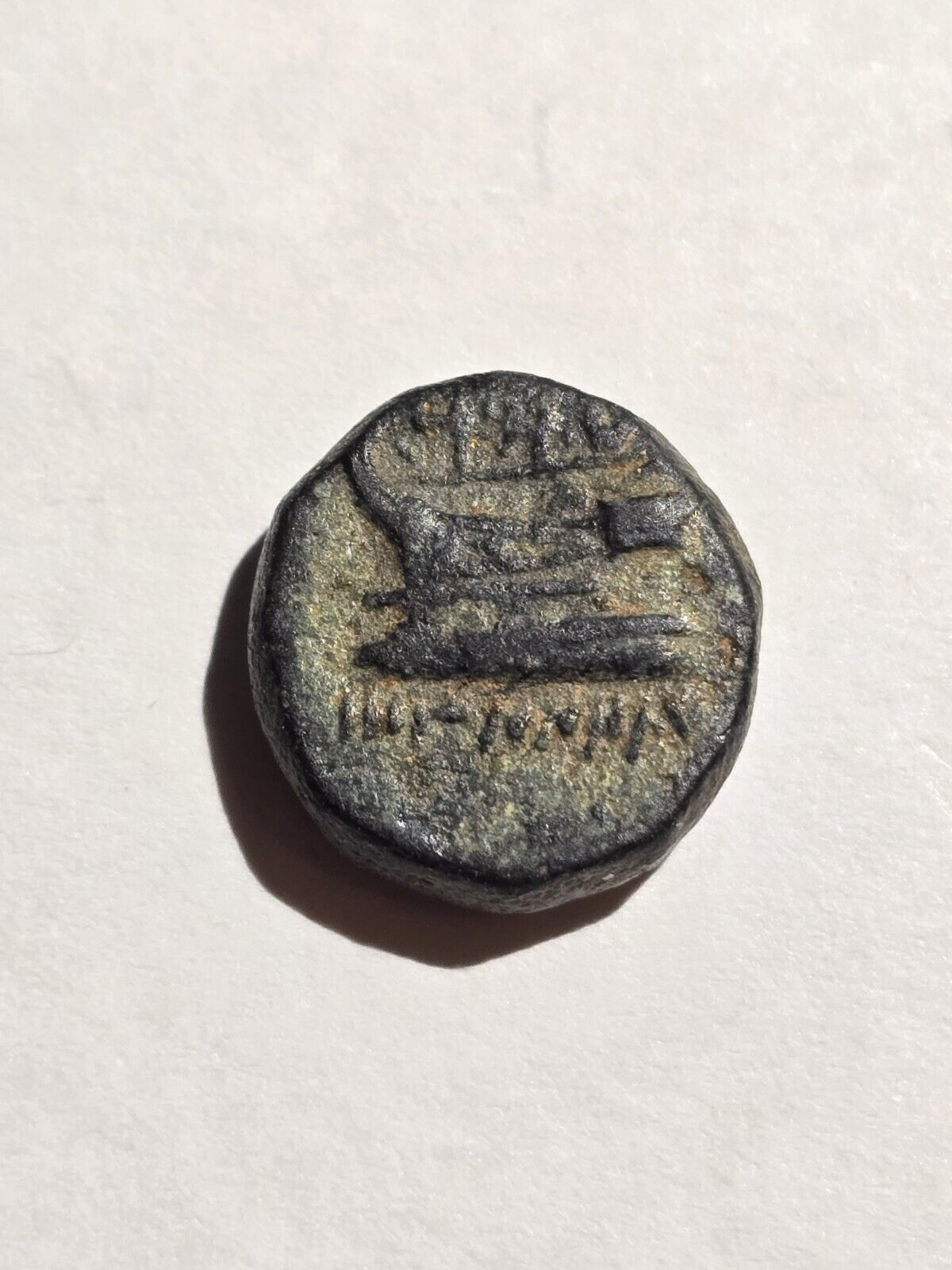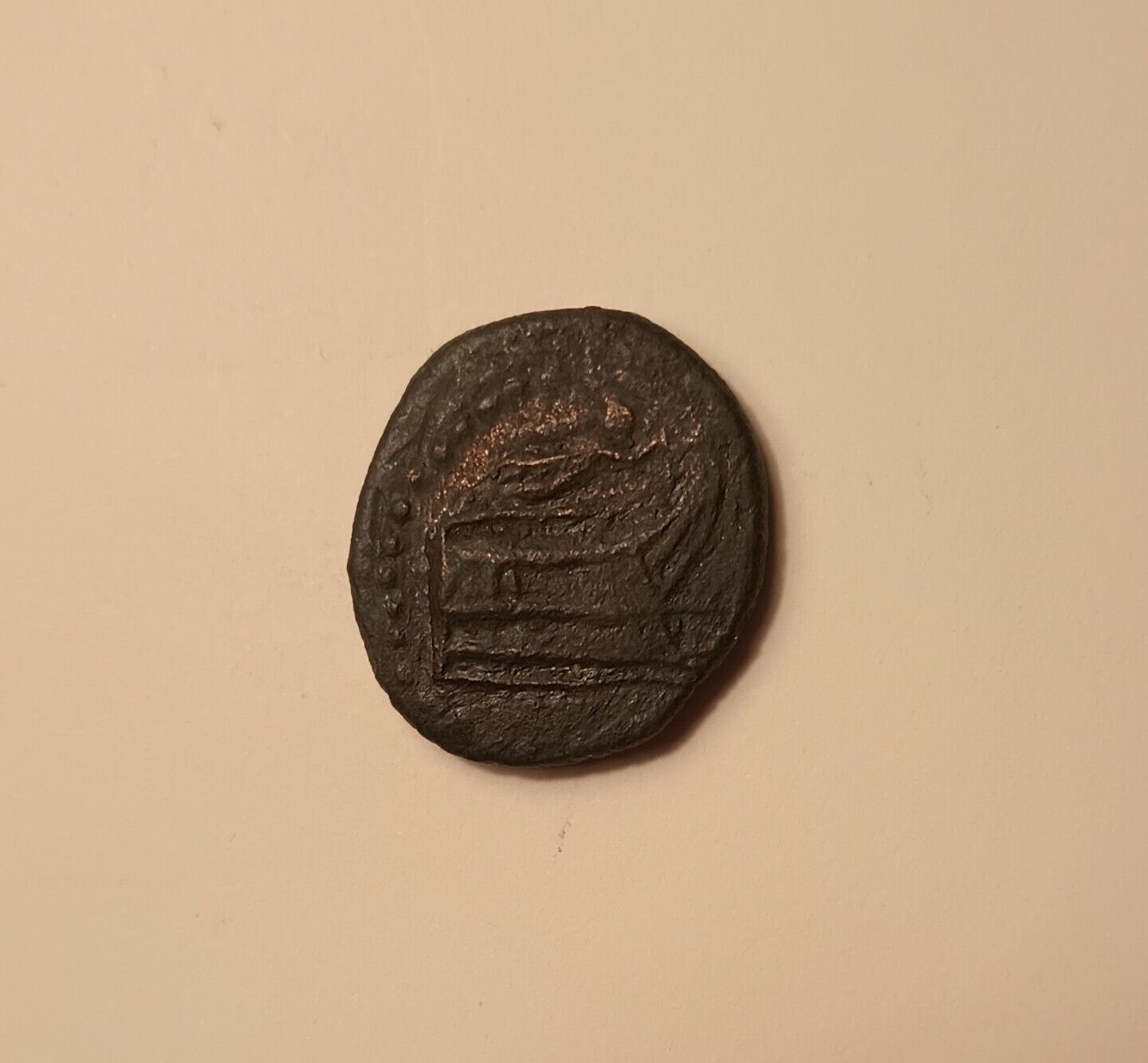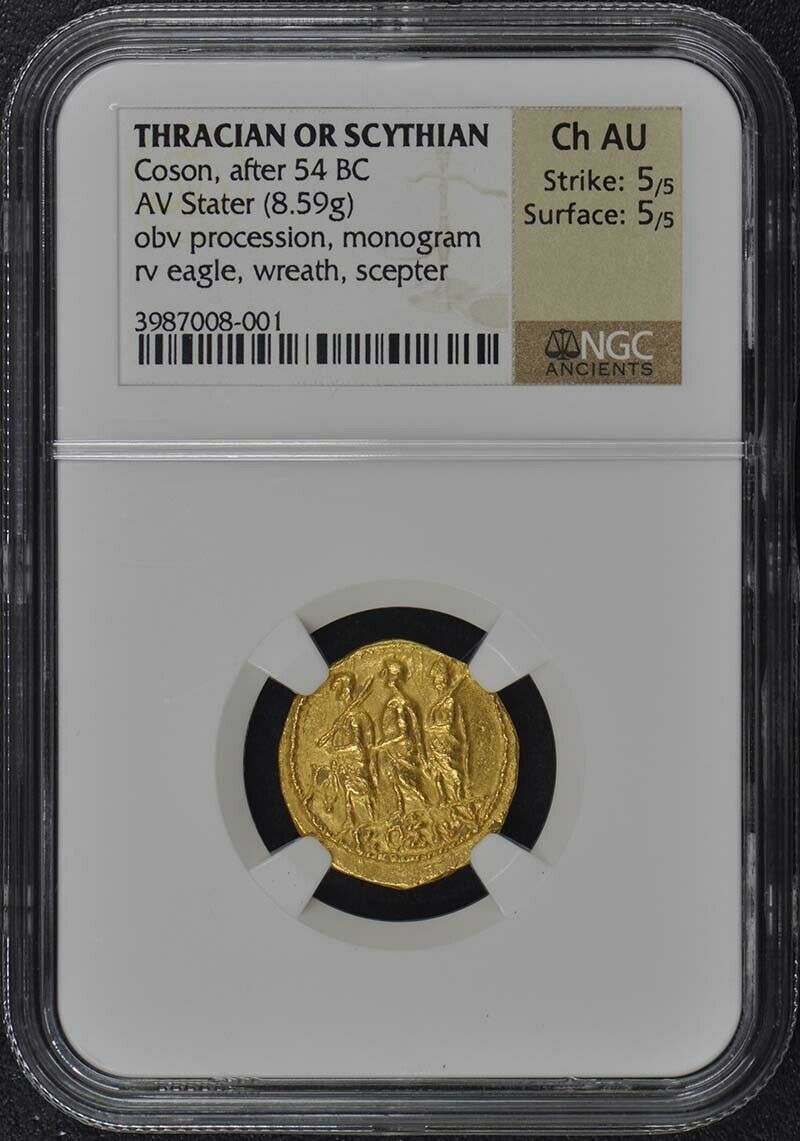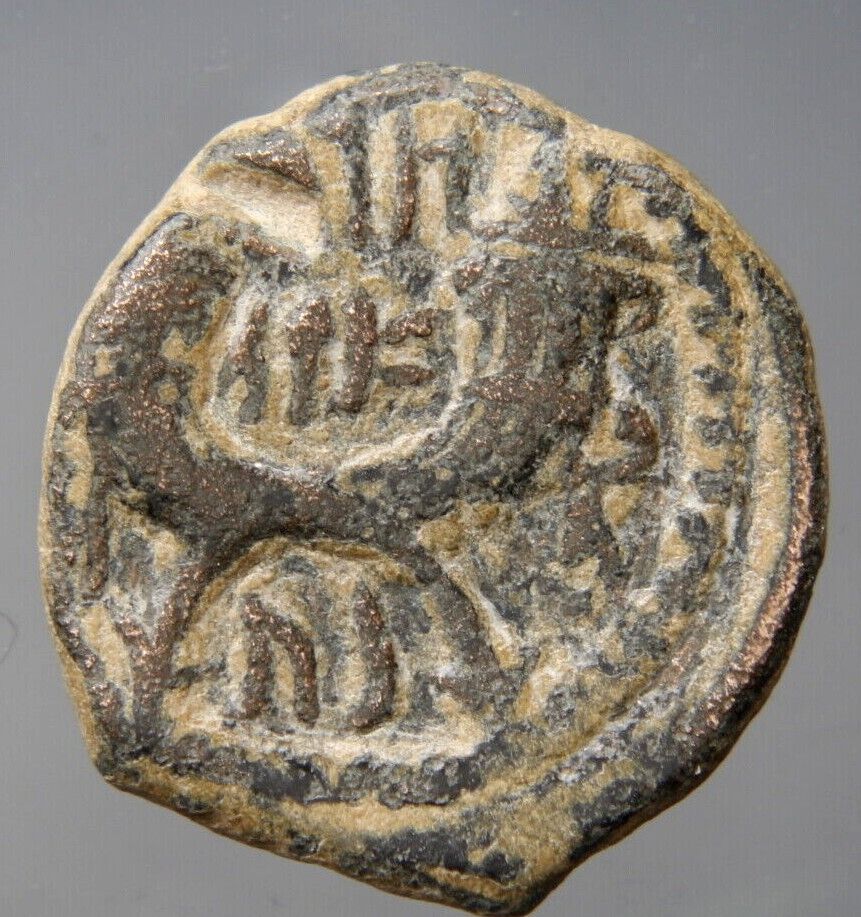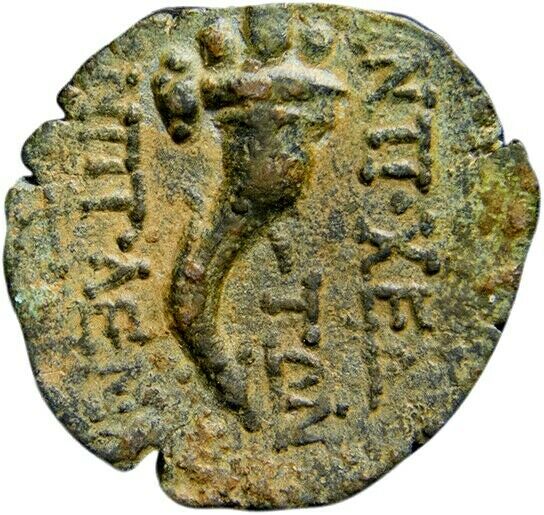-40%
AKRAGAS SICILY 464BC Rare R1 Silver Tetradrachm Ancient Greek Coin NGC i66475
$ 4962.56
- Description
- Size Guide
Description
Item:i66475
Authentic Ancient Coin of:
Greek city of
Akragas
in
Sicily
Silver Tetradrachm 24mm (17.20 grams) struck circa 464-446 B.C.
Reference: HGC 2, 87
Rare R1
; SNG Lewis 289, SNG ANS 979-981
Pedigree / Provenance: Ex Christopher "Kit" Reed Collection
Certification:
NGC Ancients
VF Strike: 4/5 Surface: 2/5 4281366-001
Sea eagle standing left; AKRAC-ANTOΣ (partially retrograde) around.
Crab within shallow incuse circle.
Akragas (Agrigentum), was a city of great wealth and importance in the 5th Century B.C., but in 406 B.C. it was sacked by the Carthaginians, a disaster from which it never fully recovered; finally fell to the Romans in 210 B.C.
You are bidding on the exact item pictured, provided with a Certificate of Authenticity and Lifetime Guarantee of Authenticity.
Agrigento
(Sicilian:
Girgenti
), is a city on the southern coast of Sicily, Italy, and capital of the province of Agrigento. It is renowned as the site of the ancient Greek city of
Akragas
(also known as
Acragas
(Ἀκράγας) in Greek,
Agrigentum
in Latin and
Kerkent
in Arabic), one of the leading cities of
Magna Graecia
during the golden age of Ancient Greece.
History
Agrigento was founded on a plateau overlooking the sea, with two nearby rivers, the Hypsas and the Akragas, and a ridge to the north offering a degree of natural fortification. Its establishment took place around 582-580 BCE and is attributed to Greek colonists from Gela, who named it
Akragas
.
Akragas grew rapidly, becoming one of the richest and most famous of the Greek colonies of
Magna Graecia
. It came to prominence under the sixth-century tyrants Phalaris and Theron, and became a democracy after the overthrow of Theron's son Thrasydaeus. Although the city remained neutral in the conflict between Athens and Syracuse, its democracy was overthrown when the city was sacked by the Carthaginians in 406 BCE. Akragas never fully recovered its former status, though it revived to some extent under Timoleon in the latter part of the fourth century.
The city was disputed between the Romans and the Carthaginians during the First Punic War. The Romans laid siege to the city in 262 BCE and captured it after defeating a Carthaginian relief force in 261 BCE and sold the population into slavery. Although the Carthaginians recaptured the city in 255 BCE the final peace settlement gave Punic Sicily and with it Akragas to Rome. It suffered badly during the Second Punic War (218-201 BCE) when both Rome and Carthage fought to control it. The Romans eventually captured Akragas in 210 BCE and renamed it
Agrigentum
, although it remained a largely Greek-speaking community for centuries thereafter. It became prosperous again under Roman rule and its inhabitants received full Roman citizenship following the death of Julius Caesar in 44 BCE.
After the fall of the Roman Empire, the city passed into the hands of the Ostrogothic Kingdom of Italy and then the Byzantine Empire. During this period the inhabitants of Agrigentum largely abandoned the lower parts of the city and moved to the former acropolis, at the top of the hill. The reasons for this move are unclear but were probably related to the destructive coastal raids of the Saracens, Berbers and other peoples around this time. In 828 CE the Saracens captured the diminished remnant of the city. They pronounced its name as
Kerkent
in Arabic; it was thus Sicilianized as "Girgenti". It retained this name until 1927, when Benito Mussolini's government reintroduced an Italianized version of the Latin name.
Agrigento was captured by the Normans under Count Roger I in 1087, who established a Latin bishopric there. The population declined during much of the medieval period but revived somewhat after the 18th century. In 1860, the inhabitants enthusiastically supported Giuseppe Garibaldi in his conquest of southern Italy (in the course of the Unification of Italy). The city suffered a number of destructive bombing raids during World War II.
Economy
Agrigento is a major tourist centre due to its extraordinarily rich archaeological legacy. It also serves as an agricultural centre for the surrounding region. Sulphur and potash have been mined locally since Roman times and are exported from the nearby harbour of Porto Empedocle (named after the philosopher Empedocles who lived in ancient Akragas). However, it is one of the poorest towns in Italy on a per capita income basis and has a long-standing problem with organised crime, particularly involving the Mafia and the smuggling of illegal drugs.
Main sights
Main article: Valle dei Templi
Ancient Akragas covers a huge area - much of which is still unexcavated today - but is exemplified by the famous
Valle dei Templi
("Valley of the Temples", a misnomer, as it is a ridge, rather than a valley). This comprises a large sacred area on the south side of the ancient city where seven monumental Greek temples in the Doric style were constructed during the 6th and 5th centuries BCE. Now excavated and partially restored, they constitute some of the largest and best-preserved ancient Greek buildings outside of Greece itself. They are listed as a World Heritage Site.
The best-preserved of the temples are two very similar buildings traditionally attributed to the goddesses Juno Lacinia and Concordia (though archaeologists believe this attribution to be incorrect). The latter temple is remarkably intact, due to its having been converted into a Christian church in 597 CE. Both were constructed to a peripteral hexastyle design. The area around the Temple of Concordia was later re-used by early Christians as a catacomb, with tombs hewn out of the rocky cliffs and outcrops.
The Temple of Concordia.
The other temples are much more fragmentary, having been toppled by earthquakes long ago and quarried for their stones. The largest by far is the Temple of Olympian Zeus, built to commemorate the Battle of Himera in 480 BCE: it is believed to have been the largest Doric temple ever built. Although it was apparently used, it appears never to have been completed; construction was abandoned after the Carthaginian invasion of 406 BCE. The remains of the temple were extensively quarried in the eighteenth century to build the jetties of Porto Empedocle. Temples dedicated to Hephaestus, Heracles and Asclepius were also constructed in the sacred area, which includes a sanctuary of Demeter and Persephone (formerly known as the Temple of Castor and Pollux); the marks of the fires set by the Carthaginians in 406 BCE can still be seen on the sanctuary's stones.
Many other Hellenistic and Roman sites can be found in and around the town. These include a pre-Hellenic cave sanctuary near a Temple of Demeter, over which the Church of San Biagio was built. A late Hellenistic funerary monument erroneously labelled the "Tomb of Theron" is situated just outside the sacred area, and a first-century CE
heroon
(heroic shrine) adjoins the 13th century Church of San Nicola a short distance to the north. A sizeable area of the Greco-Roman city has also been excavated, and several classical necropoleis and quarries are still extant.
Much of present-day Agrigento is modern but it still retains a number of medieval and Baroque buildings. These include the fourteenth century cathedral and the thirteenth century Church of Santa Maria dei Greci ("Our Lady of the Greeks"), again standing on the site of an ancient Greek temple (hence the name). The town also has a notable archaeological museum displaying finds from the ancient city.
Famous inhabitants
Empedocles, the Greek pre-Socratic philosopher, was a citizen of ancient
Agrigentum
Luigi Pirandello, dramatist and Nobel prize winner for literature. Born at Contrada Kaos near Agrigento.
Frequently Asked Questions
Mr. Ilya Zlobin
, world-renowned expert numismatist, enthusiast, author and dealer in authentic ancient Greek, ancient Roman, ancient Byzantine, world coins & more.
Who am I dealing with?
You are dealing with Ilya Zlobin, ancient coin expert, enthusiast, author and dealer with an online store having a selection of over 15,000 items with great positive feedback from verified buyers and over 10 years experience dealing with over 57,000 ancient and world coins and artifacts. Ilya Zlobin is an independent individual who has a passion for coin collecting, research and understanding the importance of the historical context and significance all coins and objects represent. Most others are only concerned with selling you, Ilya Zlobin is most interested in educating you on the subject, and providing the largest selection, most professional presentation and service for the best long-term value for collectors worldwide creating returning patrons sharing in the passion of ancient and world coin collecting for a lifetime.
How long until my order is shipped?
Orders are shipped by the next business day (after receipt of payment) most of the time.
How will I know when the order was shipped?
After your order has shipped, you will be left positive feedback, and that date could be used as a basis of estimating an arrival date. Any tracking number would be found under your 'Purchase history' tab.
USPS First Class mail takes about 3-5 business days to arrive in the U.S. International shipping times cannot be estimated as they vary from country to country.
Standard international mail to many countries
does not
include a tracking number, and can also be slow sometimes.
For a tracking number and signature confirmation, you may want to do Express Mail International Shipping, which costs more, however, is the fastest and most secure. Additionally you may be able to receive your order in as little as 3-5 business days using this method. For Express Mail International, it may be possible to place up to 10-15 items in one package (for the one shipping cost) as it is flat rate envelope, which may be the most cost-effective, secure and fastest way to receive items internationally. Send me a message about this and I can update your invoice should you want this method.
Getting your order to you, quickly and securely is a top priority and is taken seriously here.
Great care is taken in packaging and mailing every item securely and quickly.
Please be aware, I cannot take responsibility for any postal service delivery delays, especially for international packages as it may happen in rare instances.
What is a certificate of authenticity and what guarantees do you give that the item is authentic?
Each of the items sold here, is provided with a Certificate of Authenticity, and a Lifetime Guarantee of Authenticity, issued by a world-renowned numismatic and antique expert that has identified over 57,000 ancient coins and has provided them with the same guarantee. You will be very happy with what you get with the COA; a professional presentation of the coin, with all of the relevant information and a picture of the coin you saw in the listing. Additionally, the coin is inside it's own protective coin flip (holder), with a 2x2 inch description of the coin matching the individual number on the COA.
On the free-market such a presentation alone, can be considered a - value all in itself, and it comes standard with your purchases from me,
FREE.
With every purchase, you are leveraging my many years of experience to get a more complete context and understanding of the piece of history you are getting. Whether your goal is to collect or give the item as a gift, coins presented like this could be more prized and valued higher than items that were not given such care and attention to.
Buy a coin today and own a piece of history, guaranteed.
Is there a money back guarantee?
I offer a 30 day unconditional money back guarantee. I stand behind my coins and would be willing to exchange your order for either store credit towards other coins, or refund, minus shipping expenses, within 30 days from the receipt of your order. My goal is to have the returning customers for a lifetime, and I am so sure in my coins, their authenticity, numismatic value and beauty, I can offer such a guarantee.
When should I leave feedback?
Once you receive your order, please leave a positive feedback. Please don't leave any negative feedbacks, as it happens sometimes that people rush to leave feedback before letting sufficient time for their order to arrive. Also, if you sent an email, make sure to check for my reply in your messages before claiming that you didn't receive a response. The matter of fact is that any issues can be resolved, as reputation is most important to me. My goal is to provide superior products and quality of service.
How and where do I learn more about collecting ancient coins?
Visit the "
Guide on How to Use My Store
" for on an overview about using my store, with additional information and links to all other parts of my store which may include educational information on topics you are looking for.





